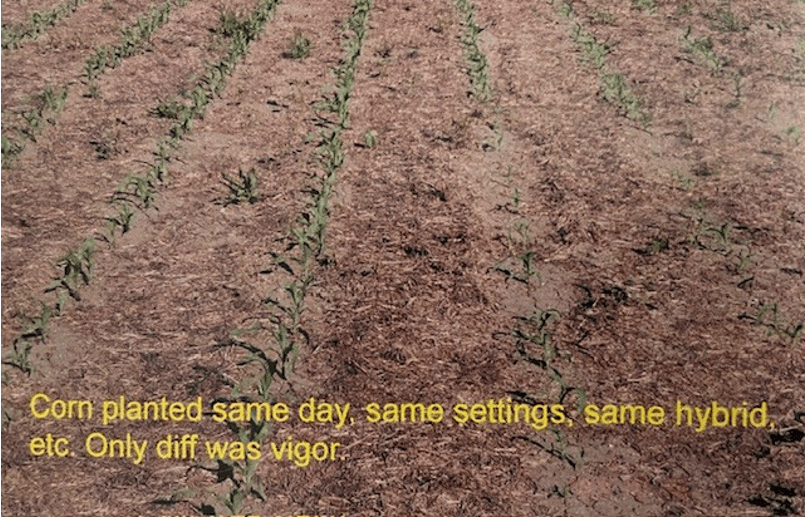By Ethan Begle
In early April, the forecast looks cool, but the field conditions are dry enough to plant. Considering what varieties to plant first, it would be helpful to know which one has the best cold germination. If there is a chance for rain, the worst thing for a newly planted seed is cool 40°F water for its first drink. It will be less stressful knowing the best cold germ seeds were planted ahead of that chance.
Successful seed establishment comes from high-vigor seed, optimal seed placement, without injury from fertilizer burn or herbicide, obtaining root colonization by beneficial biology, adequate available nutrients, and good soil properties that allow for gas exchange and moisture for the seedling.
Testing seed is a must if using bin-run wheat or beans, but it is just as important for any commercial seed you intend to plant. Use a representative sample of what you intend to plant in a couple of months, and if coming out of a bulk bin, take multiple samples as there could be heat/moisture damage on one side of the bin. High test weights or low-seed counts per pound (larger seeds) increase the probability of high seed vigor. There are two main tests: saturated cold germination, where seeds are planted for 7 days at 40°F to mimic cold water uptake, followed by 77°F temps until 120 growing degree units have been reached. The other test is AA (accelerated aging), where seed is left in high humidity 75°F for 72 hours and then planted in the lab, where germination is evaluated 7 days later. Corn, soybeans, milo, and wheat should all come back with >90% of the lot showing strong emergence for both tests. It’s important to use the same lab for all tests since tests are not sufficiently standardized between labs. Testing seeds allows you to select varieties better suited to the wet-cool conditions often found in no-till fields in April.
Seedling uniformity matters because you need adjacent plants to be at the same growth stage all the way through the seed set. This requires each seed to emerge at the same time along the length of the row. Variations in nutrients, water, or soil density will prevent these plants from continuing to grow at the same rate as their neighbors.
Nutrients applied in or near the furrow contribute to the goal of an even stand of plants all season long. Micronutrients near the seeds put them where they are needed most, making it easier for growing plants to get the access they need all season long. Pop-up fertilizer doesn’t always show yield increases at the end of the season, but the early-season benefits of a quick-growing plant shade weeds and improve vigor to handle in-season stresses.
Planting depth also determines emergence. Corn must be deep enough for nodal root development, which means at least 2” but up to 3” if the soil is dry, sandy, or warm. The wheat target is 1.5” but never more than 2”. Less than 1” can be acceptable if winter comes early so that the crown roots can be established before a hard freeze. Soybeans and milo can be 1” or less if they are still in good moisture. This assumes the opener is cutting through residue, as more often, no-tilling requires deeper planting depths to account for the mat of residue. A seed firmer will ensure that shallower planted seeds are pushed into moist furrow bottoms to get the water they need to sprout.
It’s important to understand that seed varieties play an important role in good emergence. Checking your seed lots can help decide which ones need to be planted first in cooler soils. Optimizing seed varieties, getting the seed into moisture, while adding nutrients to boost early growth, will set up the field for season-long consistency.

